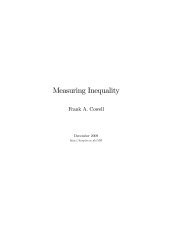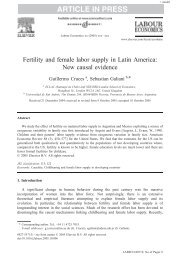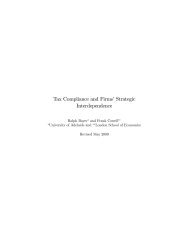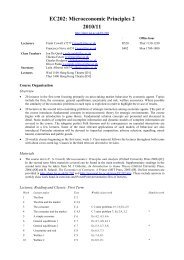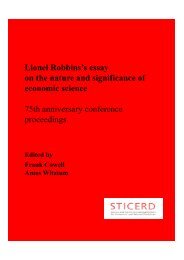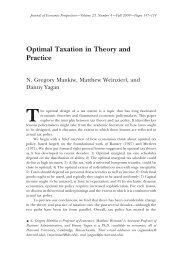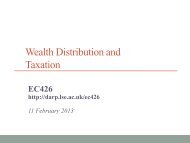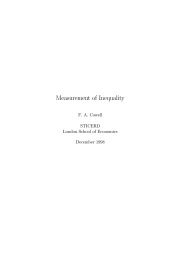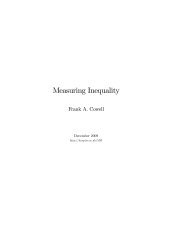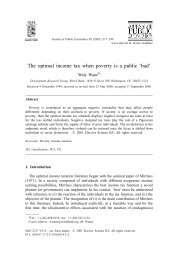Uncertainty and Risk - DARP
Uncertainty and Risk - DARP
Uncertainty and Risk - DARP
Create successful ePaper yourself
Turn your PDF publications into a flip-book with our unique Google optimized e-Paper software.
Microeconomics<br />
So now view the situation from the position of the beginning of the lifetime.<br />
The person gets utility<br />
u (x 1 ) + [u (x 2 ) + u (x 3 )] (8.13)<br />
if he makes it through to period 2, where the expression in square brackets<br />
in (8.13) is just the rest-of-lifetime expected utility if you get to period 2,<br />
taken from (8.12); of course if the person does not survive period 1 he gets<br />
just u (x 1 ). So, using the same reasoning as before, from the st<strong>and</strong>point<br />
of period 1 lifetime expected utility is now<br />
Rearranging this we have<br />
[u (x 1 ) + [u (x 2 ) + u (x 3 )]]<br />
+ [1 ] u (x 1 ) :<br />
u (x 1 ) + u (x 2 ) + 2 2 u (x 2 ) : (8.14)<br />
It is clear that the same argument could be applied to T > 2 periods <strong>and</strong><br />
that the resulting utility function would be of the form<br />
u (x 1 ) + u (x 2 ) + 2 2 u (x 2 ) + ::: + T T u (x 2 ) : (8.15)<br />
In other words we have the st<strong>and</strong>ard intertemporal utility function with<br />
the pure rate of time preference replaced by the modi…ed rate of time<br />
preference 0 := .<br />
cFrank Cowell 2006 125



